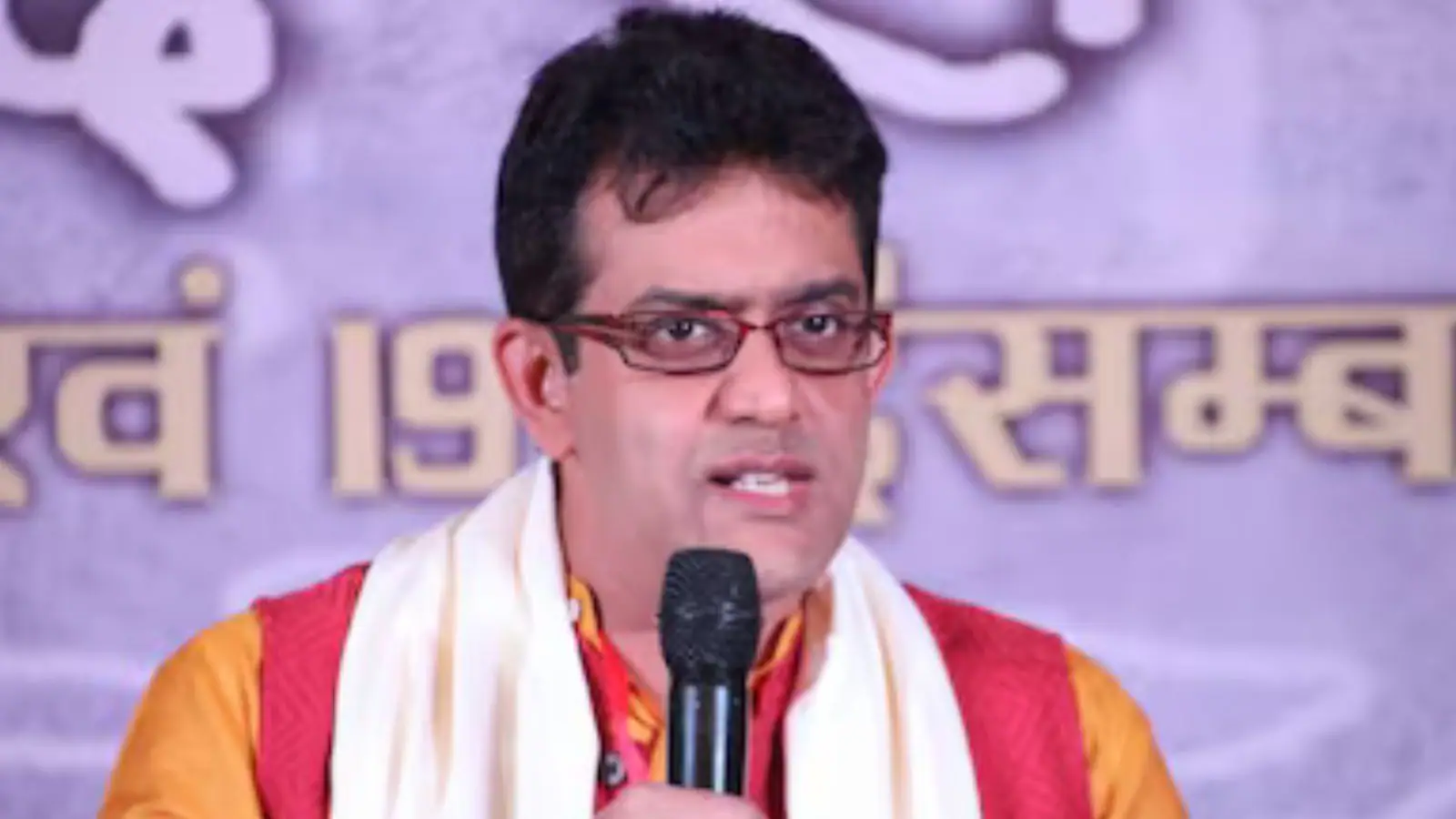Interview | Marxist Scholarship Isn’t Just The Problem, It’s The Hegemony That Came With It: Sampath
By News18,Utpal Kumar
Copyright news18

Not often do we see a historian and a writer start a startup. How did the idea of NAAV AI come up?
Before branching into history full-time and completing my PhD in History and Music from the University of Queensland, I had done my Electronics Engineering and Masters in Mathematics from BITS Pilani and an MBA in Finance from SP Jain, Mumbai. I had also worked in the corporate sector in finance for about a decade. So, the world of tech or business has not been completely alien to me.
The genesis of NAAV AI was a very personal problem that plagues me and several other authors. Our books come out in English, and for them to bridge the language divide and make themselves available to the large cross-section of India—where the soul of Bharat actually resides in the Bharatiya Bhashas—is a herculean task. My own book sometimes takes several years to get translated even into Hindi!
I was discussing this problem with a very dear friend of mine, Sandeep Singh, who comes from a hardcore technology and business strategy background, having worked with several leading multinational firms for over 20 years leading their technology and business transformation initiatives. I wanted to know if we could find a technological solution to this very real problem. That is how, very serendipitously, NAAV AI came into existence about nine months ago with Sandeep and me as co-founders.
The word NAAV or “boat” is a metaphor for navigating across vocabularies using emergent AI technology. We got some very early support from OLA founder and CEO Bhavish Aggarwal and Asha Jadeja Motwani, the Silicon Valley-based angel investor, and that is how NAAV AI came about in January 2025. Our main goal and mission have been to create solutions around the translation of long-form content—which could be books, blogs, files, media organisations, and non-music audio content—from English to Indian languages and vice versa.
What’s the objective behind the NAAV initiative?
A recent survey said about 98 per cent of Internet users in India want to consume content in regional languages, and it is a fact that just 5–6 per cent of our country perhaps knows and consumes English. Currently, translations—especially for books—are such slow, laborious, and manual processes that take months and sometimes years to complete. Thus, the supply is never able to meet the demand.
Though with 22 official languages, several dialects, a burgeoning publishing industry ranked second in the world in English and third across all languages after the US and China, and some 5–10 lakh books in both Trade and Academic segments being published—with the industry itself slated to grow to about $17 billion by 2030—India is a linguistic haven. But we have simply ignored this important sector.
Cross-communication between Indian languages, to create more awareness and understanding of one part of India with another, is also an important task that this can help achieve. A Malayalam book into Assamese, or Gujarati to Bengali, without the via media of English, can help boost the much-needed national unity amidst all the language squabbles we sadly have today.
With the requirements of the NEP that make teaching in the mother language a desired mandate, the demand for textbooks and educational content in Indian languages—for both private publishers and the government—is a very real issue. And it is this gap that NAAV AI seeks to bridge.
Translation is an intricate art that needs a nuanced understanding of the subject and situation. Do you think an AI model can handle such nuances while translating a book?
That is a valid concern and question that many people have. Creative industries like publishing and authors would naturally have such apprehensions. Hence, in all our workflows, we have AI-assisted but human-refined solutions.
On the back end, we use a multi-model agentic workflow that very quickly gives us a first draft of the translation in about an hour or so. We have hired an entire team of language experts and professional translators who thoroughly review the first draft to handle exactly what you mentioned—cultural and linguistic nuances—to make it an effective and seamless read.
Recently, we have teamed up with SARVAM AI, which is building one of India’s sovereign LLMs specifically trained for Indic languages, to co-build this platform. With these, our accuracy levels in translations go up to about 80–90 per cent. So that reduces the time of manual intervention significantly. What might have taken a human translator six months to do from scratch can now be accomplished in just three to four weeks—making them more productive and efficient and also ramping up volumes of good-quality content in Indian languages.
For authors, too, it is a win-win—to make their voices reach across the country, beyond merely English. For publishers, it opens up new streams of royalty. For translators, AI is not going to gobble up their jobs, but actually make them more sought-after, providing a more stable and steady source of income.
You plan to bring out book translations in six Indian languages: Hindi, Kannada, Marathi, Tamil, Telugu, and Malayalam. What is the idea behind selecting these six languages, and do you intend to extend it to other languages in the future?
These were just the initial languages we chose with our first partner and client BluOne Ink, who were so open and ready to embrace technology. In just a month, we translated four children’s books into these six languages—producing 24 books! Perhaps for the first time in the history of the publishing industry in India, on one platform on the same day, books in English along with six Indian languages were launched.
From these six languages, we are now expanding to Gujarati, Bengali, Odia, and Assamese too. As capabilities enhance and LLMs and SLMs improve, more and more languages and dialects can be added.
Currently, the biggest problem that AI models face in India is the lack of datasets and corpora of different languages. The Government’s IndiaAI mission and other initiatives are certainly awake to this challenge, but I think it’s still a very long time before we can build a DeepSeek equivalent for our languages. But when we do that, just the sheer volume of languages and population (both of which are otherwise seen as disadvantages) would actually become our biggest plus point.
You have also set up FIHCR, which is trying to build a historical ecosystem that challenges entrenched Nehruvian scholarship. Please tell us about this initiative.
The problem isn’t just Nehruvian or Marxist scholarship—it’s the monopoly and the hegemony that came with it. For decades, a small, ideologically homogenous group controlled the levers of historical discourse—deciding who gets published, what gets taught, and which questions are even worth asking.
That kind of intellectual gatekeeping has prevented the emergence of a truly diverse and dynamic historical ecosystem. In a discipline like history, debate, dissent, and differences of opinion need to be common and encouraged. Whereas in India, especially after independence, anyone who held a divergent viewpoint was labelled as communal—or worse, paid a very heavy price in their careers. This is an undeniable fact. The same gatekeepers then scoff by asking, “Where are the right-wing intellectuals?”—when for decades they have snuffed out, demonised, and stomped any divergent viewpoints.
FIHCR was created to break that logjam—not by replacing one ideology with another, or one distortion with another, but by creating an honest space for serious, civilisationally rooted, and evidence-based scholarship to thrive. Through our Sir Jadunath Sarkar Fellowship for Indian History, we support scholars across disciplines with Rs 15 lakh each, along with year-long mentorship, research infrastructure, and editorial support. The idea is to empower them to pursue original work that challenges lazy assumptions and adds new depth to Indian historiography.
Through our research and projects incubated in universities as multi-disciplinary initiatives, we seek to find answers to historical questions that have deep contemporary relevance and resonance—by accessing the primary sources in the languages they are written in, and by working closely with the scholars of those languages.
In India, without knowing a word of Sanskrit or Pali, you can be an expert on Ancient India—or the same for Mediaeval history without even a cursory knowledge of Persian, Arabic, or other languages. Depending on Western or motivated translations, we build entire narratives that damage the country over the long run.
FIHCR is not about countering one narrative with another—it’s about opening the field and trusting that India’s past, when honestly studied, speaks for itself.
You are a prolific writer. How do you manage to give time to such time-consuming work while writing?
I honestly wish I had an answer to that question. It’s divine grace and the blessings of my gurus and parents that give me the willpower to swim against the tide most often and ensure that things just get done somehow! It’s about being a very available and willing instrument for a larger cause that we strongly believe in—and working assiduously for it.
Your last work on Tipu Sultan was a bestseller. What do you plan to write next?
Right now, FIHCR and NAAV AI are keeping me on my toes, with no time for anything else—including public engagements, talks, or social media banter. Life is so short, and there is so much to be accomplished! However, I do have a few ideas that are brewing—it may be too early to talk about which of these might eventually crystallise into a full-length book.



